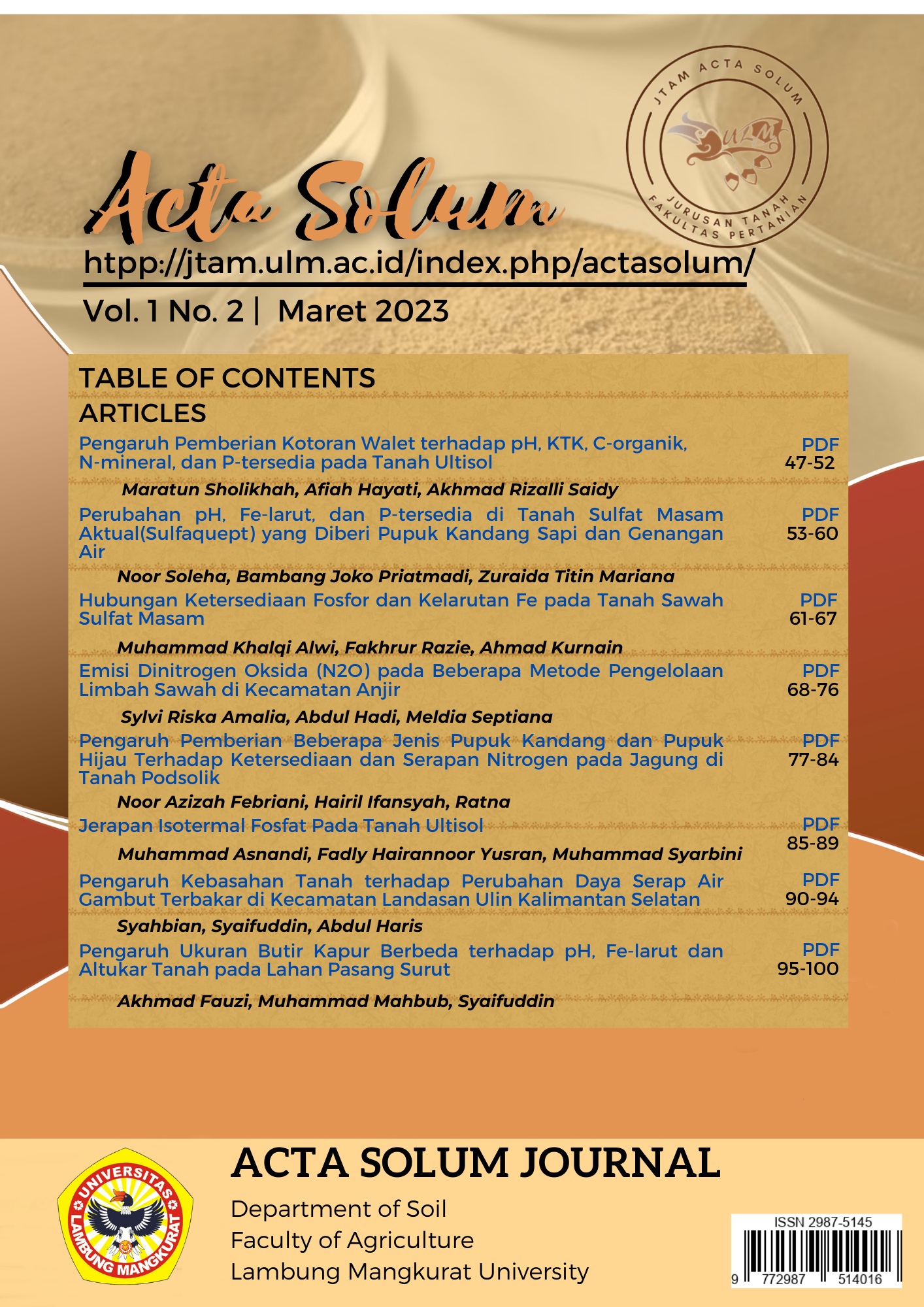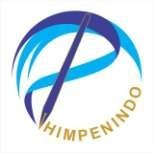Pengaruh Kebasahan Tanah terhadap Perubahan Daya Serap Air Gambut Terbakar di Kecamatan Landasan Ulin Kalimantan Selatan
Abstract
Peat swamp land in Indonesia is quite extensive, which is 10.8% of Indonesia's land area, the area of peatland in Indonesia is estimated at around 14.95 million hectares, the largest on the islands of Sumatra, Kalimantan and Papua and a small part in Sulawesi. The dry process is not good can be associated with bulk density. Irreversible dryness can occur in peat with low lindak density, while peat with high lindak density is relatively easy to reabsorb water. Peat soils store much higher carbon than mineral soils. Every gr of dry peat stores about 180-600 mg of carbon, while every gr of mineral soil contains only 5-80 mg of carbon. This research method uses a descriptive exploratory method whose variable approach is carried out through land surveys and is supported by the results of soil analysis in the laboratory. The results showed the value of water content and water absorption of peat soil in the protected forest of Banjarbaru peat soil based on different times and showed a decrease in the level and absorption of peat soil.
References
Adlika, N.M., Tampubolon, B., Mirzachaerulsyah, E., Juniarti, N. 2019. Implementasi pembelajaran pada laboratorium geografi berbantuan media peta pemanfaatan lahan gambut di SMA Negeri 3 Pontianak. Jurnal Pendidikan Ilmu Pengetahuan Sosial Indonesia 4(2), 55-57. doi.org/10.26737/jpipsi.v4i2.1353
Agus, F., Subiksa, I.G.M. 2008. Lahan Gambut: Potensi untuk Pertanian dan Aspek Lingkungan. Balai Penelitian Tanah dan World Agroforestry Centre (ICRAF). Bogor. Indonesia. 36p.
Anshari, G.Z., Gusmayanti, E., Novita, N. 2021. The use of subsidence to estimate carbon loss from deforested and drained tropical peatlands in Indonesia. Forests 12(6), 732. doi.org/10.3390/f12060732
Kettridge, N., Humphrey, R.E., Smith, J.E., Lukenbach, M.C., Devito, K.J., Petrone, R.M., Waddington, J.M. 2014. Burned and unburned peat water repellency: Implications for peatland evaporation following wildfire. Journal of Hydrology 513, 335-341. doi.org/10.1016/j.jhydrol.2014.03.019
Masganti, Anwar, K., Susanti, M.A. 2017. Potensi dan pemanfaatan lahan gambut dangkal untuk pertanian. Jurnal Sumberdaya Lahan 11(1), 43-52.
Masganti, Wahyunto, Dariah, A., Nurhayati, Yusuf, R. 2014. Karakteristik dan potensi pemanfaatan lahan gambut terdegradasi di Provinsi Riau. Jurnal Sumberdaya Lahan 8(1), 47-54.
McCarter, C.P.R., Rezanezhad, F., Quinton, W.L., Gharedaghloo, B., Lennartz, B., Price, J., Connon, R., Van Cappellen, P. 2020. Pore-scale controls on hydrological and geochemical processes in peat: Implications on interacting processes. Earth-Science Reviews 207, 103227. doi.org/10.1016/j.earscirev.2020.103227
Omar, M.S., Ifandi, E., Sukri, R.S., Kalaitzidis, S., Christanis, K., Lai, D.T.C., Bashir, S., Tsikouras, B. 2022. Peatlands in Southeast Asia: A comprehensive geological review. Earth-Science Reviews 232, 104149. doi.org/10.1016/j.earscirev.2022.104149
Ritung, S., Wahyunto, Nugroho, K., Sukarman, Hikmatullah, Suparto, Tafakresnanto, C. 2011. Peta Lahan Gambut Indonesia Skala 1:250.000. Balai Besar Penelitian dan Pengembangan Sumberdaya Lahan Pertanian. Bogor.

















